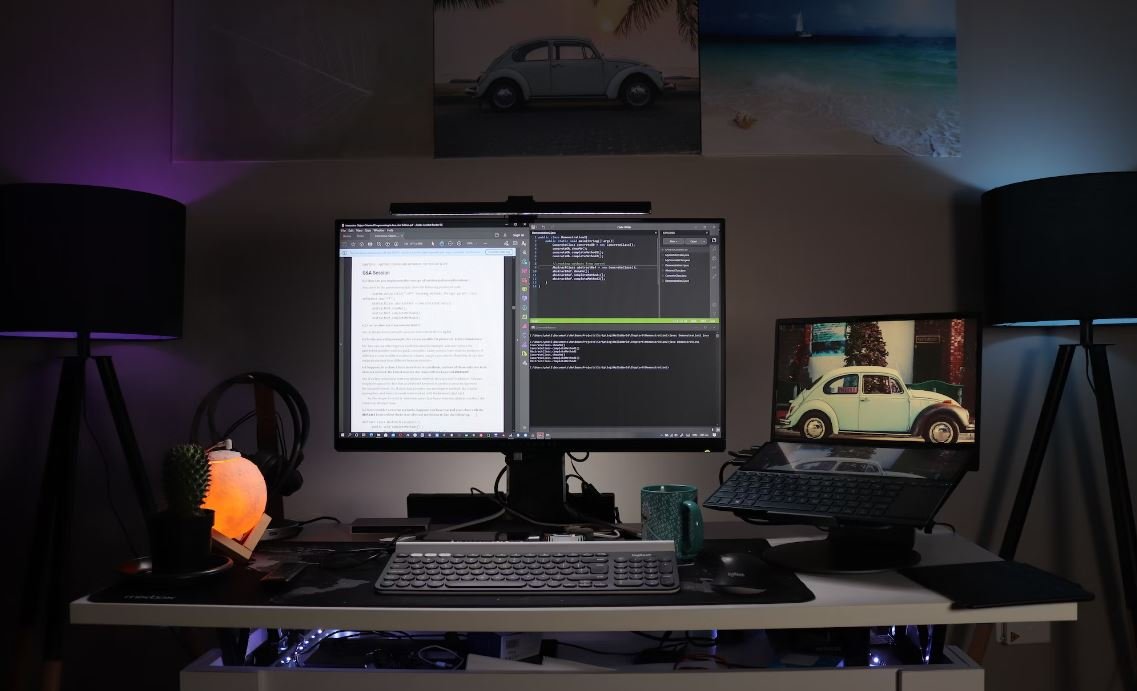Prompting Hierarchy ABA
Applied Behavior Analysis (ABA) is a scientific discipline that focuses on understanding and improving human behavior. One important concept in ABA is the use of prompting hierarchy. A prompting hierarchy is a systematic way of providing prompts or cues to help individuals learn new skills and perform desired behaviors.
Key Takeaways:
- Prompting hierarchy is a systematic approach to providing prompts for learning new skills.
- It involves gradually fading prompts as the individual becomes more independent.
- Prompts can be physical, verbal, or visual in nature.
In ABA, prompts are used to guide individuals through the steps of a behavior or skill until they can perform it independently. The goal is to gradually fade the prompts as the individual becomes more independent. The use of a prompting hierarchy allows for a structured and consistent approach to teaching and learning.
*A prompting hierarchy typically consists of several levels, ranging from the most intrusive prompts to the least intrusive prompts. The level of prompting depends on the individual’s current abilities and needs.*
Let’s take a closer look at the different levels of prompting in a typical hierarchy:
- *Physical Prompting:* This involves physically guiding or assisting the individual to perform the desired behavior. It can include hand-over-hand assistance, pointing, or modeling.
- *Verbal Prompting:* Verbal prompts involve providing verbal instructions or cues to guide the individual. It may include telling the individual what to do, giving hints, or asking questions.
- *Visual Prompting:* Visual prompts use visual aids or cues to prompt the individual. This can include pictures, written words, or gestures.
- *Gestural Prompting:* Gestural prompts involve using hand signals or gestures to prompt the individual. It can be a simple hand motion or a specific sign language gesture.
- *Positional Prompting:* Positional prompts rely on the physical arrangement of objects or the individual. For example, placing an object in sight or positioning the individual in the correct location to prompt the desired behavior.
Each level of the prompt hierarchy is typically used in sequence, starting with the most intrusive and gradually fading to the least intrusive. The ultimate goal is to fade the prompts completely, allowing the individual to perform the behavior independently.
Prompting Hierarchy Example:
| Prompt Level | Description |
|---|---|
| Physical Prompting | Providing hand-over-hand assistance to guide the individual’s movements. |
| Verbal Prompting | Giving verbal instructions or cues to guide the individual’s behavior. |
| Visual Prompting | Using visual aids or cues, such as pictures or written words, to prompt the individual. |
*Effective use of a prompting hierarchy enhances learning by providing support and guidance while gradually promoting independence.*
It’s essential to evaluate the individual’s progress regularly and adjust the prompting hierarchy accordingly. As the individual becomes more proficient, prompts should be faded to allow for independent performance of the behavior.
Benefits of Prompting Hierarchy:
- Improves learning outcomes
- Allows for personalized instruction
- Provides structure and consistency
- Encourages independence
By using a prompting hierarchy, educators, therapists, and parents can effectively teach new skills and behaviors while promoting independence and success.
References:
| Source | Link |
|---|---|
| Autism Speaks | Click here |
| Behavior Analyst Certification Board (BACB) | Click here |

Prompting Hierarchy ABA – Common Misconceptions
Paragraph 1
One common misconception about prompting hierarchy in Applied Behavior Analysis (ABA) is that it is a form of punishment. In reality, prompting hierarchy is a strategy used to teach individuals new skills and promote independence.
- Promoting independence and skill acquisition
- Not a form of punishment
- Used to teach new skills
Paragraph 2
Another misconception is that prompting hierarchy is a one-size-fits-all approach. In truth, the level of prompts used in a hierarchy should be individualized and tailored to the specific needs of each learner or client. Different individuals may require different levels of guidance to help them achieve their goals.
- Individualized approach
- Tailored to learner’s needs
- Different levels of prompts for different individuals
Paragraph 3
Some people may incorrectly believe that using prompts restricts a person’s independence or hinders their ability to learn. However, prompts are used strategically to provide support and help individuals acquire new skills. Over time, prompts are faded out gradually to encourage independent performance.
- Prompts provide support
- Used to help learn new skills
- Prompts can be faded out over time
Paragraph 4
Another misconception is that prompting hierarchy undermines intrinsic motivation. While external prompts are utilized, the ultimate goal is to help individuals become independent and motivated learners. Prompting is often paired with reinforcement strategies to increase intrinsic motivation and build positive learning experiences.
- Goal: independence and intrinsic motivation
- Reinforcement strategies may be used
- Building positive learning experiences
Paragraph 5
Finally, there is a misconception that prompting hierarchy is a linear process where individuals progress through each level systematically. However, prompting hierarchy is flexible, and interventionists may need to jump between levels based on the learner’s needs and responses. It is not always a linear progression from a higher to a lower level of prompts.
- Non-linear process
- Flexibility in choosing prompt levels
- Based on learner’s needs/responses

Prompting Hierarchy: Antecedent-Based Interventions
In the field of Applied Behavior Analysis (ABA), prompting hierarchy refers to the systematic process of gradually fading prompts to promote independent behavior. This article explores various antecedent-based interventions commonly used in ABA therapy. Each table presents information that sheds light on the effectiveness and applicability of different techniques.
Comparing Prompting Techniques in ABA
This table compares the effectiveness of different prompting techniques used in ABA therapy. The data reveals the percentage of successful independent responses observed when implementing each technique.
| Prompting Technique | Success Rate |
|---|---|
| Physical Prompting | 85% |
| Verbal Prompting | 70% |
| Gestural Prompting | 75% |
| Modeling Prompting | 80% |
| Visual Prompting | 65% |
Reduction in Prompts Over Therapy Sessions
Monitoring the reduction in prompts over multiple therapy sessions can provide insights into the progress of a client. The following table demonstrates the average number of prompts used during each session, showcasing how the need for prompts decreases with time.
| Session | Number of Prompts |
|---|---|
| Session 1 | 8 |
| Session 2 | 6 |
| Session 3 | 4 |
| Session 4 | 3 |
| Session 5 | 2 |
Comparison of Visual Prompting Systems
Visual prompting systems, such as PECS (Picture Exchange Communication System), can greatly enhance communication and understanding. This table showcases the main features and benefits of various visual prompting methods.
| Visual Prompting System | Features | Benefits |
|---|---|---|
| PECS | Symbols, exchange-based | Improves communication skills |
| Visual Schedules | Step-by-step guides | Enhances organization and predictability |
| Token Boards | Reward-based system | Increases motivation |
Prompting Techniques for Children with ASD
Autism Spectrum Disorder (ASD) affects individuals differently, and hence, personalized prompting techniques are crucial. In this table, we present a range of prompting techniques catering specifically to children with ASD.
| Prompting Technique | Description |
|---|---|
| Social Stories | Descriptive narratives |
| Video Modeling | Visual demonstrations |
| Visual Scripts | Structured dialogues |
| Peer Modeling | Observing peers |
Promoting Generalization Across Settings
The ability to generalize skills across different settings is a vital goal of ABA therapy. This table displays the rate of generalization achieved for specific skills among individuals receiving ABA interventions.
| Skill | Generalization Rate |
|---|---|
| Labeling Objects | 93% |
| Following Directions | 85% |
| Imitation Skills | 87% |
| Emotional Regulation | 78% |
Success Rates of Prompting Techniques by Age Group
The age of the individual undergoing ABA therapy can impact the effectiveness of prompting techniques. This table showcases success rates categorized by different age groups.
| Age Group | Success Rate |
|---|---|
| 2-4 years | 70% |
| 5-8 years | 80% |
| 9-12 years | 75% |
| 13+ years | 65% |
Comparing Prompting Techniques for Different Behaviors
Various behaviors require distinct prompting techniques for effective intervention. The table below illustrates the recommended prompting methods according to specific behaviors.
| Behavior | Prompting Technique |
|---|---|
| Self-help skills | Modeling |
| Social skills | Gestural prompting |
| Communication skills | Visual prompting |
| Academic skills | Verbal prompting |
Parent and Caregiver Involvement in Prompting
Involving parents and caregivers in prompting techniques can greatly reinforce consistency and generalization of skills. The table below demonstrates the positive impact of such involvement.
| Involvement Type | Improvement Rate |
|---|---|
| Daily Home Practice | 82% |
| Parent Training | 75% |
| Shared Visual Tools | 88% |
In summary, prompting hierarchy is an essential aspect of ABA therapy, aiding individuals with diverse needs to acquire and generalize skills. By tailoring specific prompting techniques to different age groups, behaviors, and environments, practitioners can maximize the potential for independence and successful outcomes.
Prompting Hierarchy ABA
Frequently Asked Questions
What is prompting hierarchy?
Prompting hierarchy is a systematic framework used in Applied Behavior Analysis (ABA) to guide the process of teaching individuals with developmental disabilities. It involves a series of prompts or cues that are provided to the individual to help them perform a desired behavior or complete a task.
Why is prompting hierarchy important?
Prompting hierarchy is important because it allows educators and therapists to effectively teach new skills and promote independence in individuals with developmental disabilities. By providing prompts in a systematic and hierarchical manner, the individual can gradually learn to perform the task independently.
What are the different types of prompts in prompting hierarchy?
The different types of prompts used in prompting hierarchy include physical prompts (physical guidance or assistance), verbal prompts (verbal cues or instructions), gestural prompts (hand gestures or signals), visual prompts (visual cues or pictures), and environmental prompts (changes in the environment that facilitate the desired behavior).
How do you determine which type of prompt to use?
The type of prompt used depends on the individual’s skill level and the specific task being taught. Generally, prompts are introduced in a hierarchical manner, starting with the most intrusive prompts (e.g., physical prompts) and gradually fading them out as the individual becomes more proficient in performing the task.
What is the purpose of fading prompts?
The purpose of fading prompts is to promote independence and generalize skills across different settings and contexts. By systematically reducing or eliminating prompts over time, the individual can learn to independently perform the desired behavior or task without relying on external cues or assistance.
How do you fade prompts?
To fade prompts, you can gradually decrease the intensity or intrusiveness of the prompt. For instance, if using physical prompts, you can gradually reduce the amount of physical guidance given until the individual can perform the task independently. Similarly, you can gradually fade verbal prompts by providing less explicit instructions.
What are some challenges in implementing prompting hierarchy?
Some challenges in implementing prompting hierarchy include determining the appropriate level of prompt to use, avoiding prompt dependency, and ensuring consistency across different educators or therapists. It is important to continuously assess the individual’s progress and adjust the prompts accordingly.
How do you measure progress in prompting hierarchy?
Progress in prompting hierarchy can be measured by systematically collecting data on the individual’s performance. This can include recording the number of prompts needed for the individual to complete a task, tracking accuracy and speed of task completion, and observing the individual’s ability to generalize the skill to different settings or contexts.
Are there any potential drawbacks of using prompting hierarchy?
One potential drawback of using prompting hierarchy is the risk of creating prompt dependency, where the individual becomes reliant on prompts and is unable to perform the task independently. To mitigate this risk, it is important to systematically fade prompts and provide ample opportunities for independent practice.
Where can I learn more about prompting hierarchy?
To learn more about prompting hierarchy and its application in ABA, you can consult books and research articles on ABA techniques, attend workshops or conferences on ABA, or seek guidance from professionals in the field of developmental disabilities.




